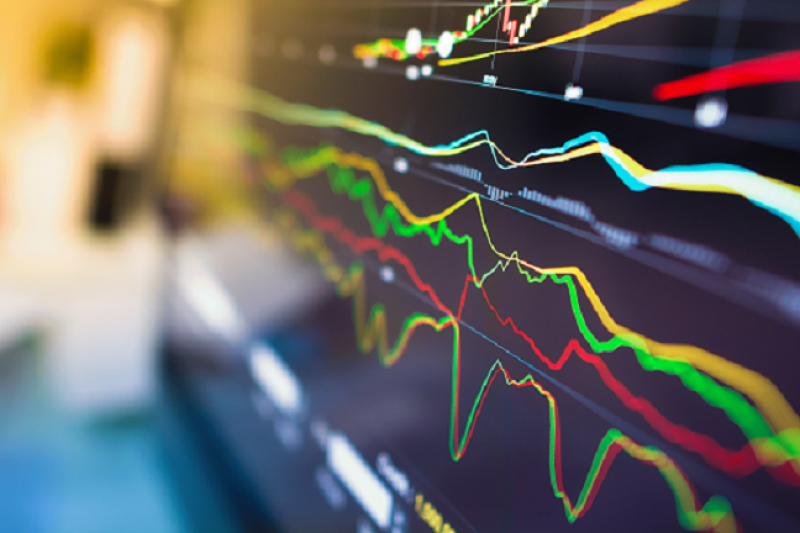by Christopher Gannatti, CFA Global Head of Research, WisdomTree
Key Takeaways
- Market valuations are driven as much by investor psychology as fundamentals. Currently, AI enthusiasm is fueling current high valuations, particularly among the “Magnificent Seven” stocks.
- Historical market bubbles—from the Nifty Fifty to the dot-com era—show that while technological revolutions create lasting change, valuations that outpace reality often lead to painful corrections.
- Investors can navigate today’s high-valuation environment by focusing on fundamentals, considering value-oriented strategies and avoiding overconcentration in overhyped market segments.
Investing is a curious mix of logic and emotion, and few topics capture this tension as vividly as market valuations. They evoke awe during periods of booming optimism and despair when pessimism grips the crowd. From the tech boom of the late 1990s to today's dominance of AI-driven narratives, markets rarely follow a script. As Howard Marks eloquently puts it, bubbles aren't just about numbers—they're about the stories we tell ourselves.1
There's a paradox baked into valuations. After a run of strong returns, investors bask in the comfort of momentum but grow uneasy about lofty prices. When prices tumble and valuations improve, hesitation creeps in, and the fear of catching a falling knife dominates decision-making. This cycle of perpetual discomfort is the emotional tax we pay for participating in markets. Understanding it—and better yet, managing it—is what separates short-term thinkers from long-term builders.
Understanding Market Valuations and Bubbles
A bubble isn't merely the product of soaring prices. It's a cultural phenomenon, where exuberance turns to mania and skepticism becomes an afterthought. History offers us an endless reel of examples. The Dutch tulip craze, the South Sea Bubble, the Nifty Fifty and the Technology, Media and Telecoms (TMT) boom all shared one striking similarity: the belief that "this time is different."2
Every bubble needs a good story. The TMT era had its "eyeballs and clicks," metrics that stretched credulity even as they captivated imaginations. The current fascination with artificial intelligence has echoes of that optimism. Roy Amara's observation rings true here: people often overestimate the impact of technology in the short term but vastly underestimate it in the long term.3 The TMT boom was an era of unrealistic expectations, but its core ideas—valuing engagement and network effects—have become the bedrock of some of today's largest companies like Meta and Alphabet.
The real challenge lies in distinguishing between ideas that are simply too early and those that are fundamentally flawed. This nuance often gets lost in the mania of newness, yet it's essential for navigating markets with clarity.
Historical Lessons: Bubbles and Their Bursting Points
History isn't just a record of what happened—it's a guide to what could happen again. The Nifty Fifty stocks of the 1960s and 1970s were the original "too big to fail" investments. These companies were perceived as unstoppable, with price-to-earnings (P/E) ratios soaring to unprecedented levels. Xerox, Kodak, Polaroid—these weren't just companies; they were icons. And yet, by the mid-1970s, the value of many of these stocks had dropped significantly.4 Even the best companies can become the worst investments if the price paid is too high.
Fast-forward to the late 1990s and the internet was the new frontier. Companies with no profits—or even clear business models—were valued at billions. The internet changed the world, but the companies at the heart of the TMT bubble didn't live to see it. Pets.com became the cautionary tale of a generation, yet today, e-commerce is thriving, driven by the likes of Amazon.
The lesson is clear: valuation matters. Jeremy Siegel's Stocks for the Long Run reminds us that while stocks have delivered an average real return of 6.9% per year over two centuries, the price you pay determines your experience.5
High valuations, like those seen in the late 1990s or during the Nifty Fifty era, often presage significant corrections. But the market's tendency to overshoot—both up and down—creates opportunities for those with patience and discipline.
Howard Marks included a graph in a recent article from J.P. Morgan Asset Management, shown here as figure 1.6 There is a square for each month from 1988 through late 2014, meaning there are 324 monthly observations. Each square represents the forward P/E ratio of the S&P 500 Index and then the annualized return over the following 10 years. It's a clear depiction of all that we've said so far: the starting valuation has a clear relationship to the subsequent return experienced.
- Higher valuations have been associated with lower forward-looking returns.
- Lower valuations have been associated with higher forward-looking returns.
Figure 1: S&P 500 Forward P/E Ratios and Subsequent 10-Year Returns

Source: J.P. Morgan Asset Management, from Howard Marks, "On Bubble Watch," Oaktree Capital, 1/7/25. Past performance is not indicative of future returns. You cannot invest directly in an index.
Today's Market: Are We in a Bubble?
The "Magnificent Seven"—Apple, Microsoft, Alphabet, Amazon, Nvidia, Meta and Tesla—are the heroes of the current market narrative. Together, they account for over 30% of the S&P 500's total market capitalization.7 Nvidia, trading at a P/E ratio in the low 30s, exemplifies the AI-driven enthusiasm. Yet, as history has shown, dominance today doesn't guarantee permanence tomorrow.
Hendrik Bessembinder's research highlights a fascinating reality: a tiny fraction of stocks drives the vast majority of long-term wealth creation. Nvidia, for example, delivered an annualized compound return of 33.38% over 25 years, translating to a cumulative return of 131,500%. But here's the kicker—more than half of all stocks have negative lifetime returns. The positive skewness of returns means that finding and holding onto those exceptional performers is critical.8
Passive investing, too, has reshaped market dynamics. With over $10 trillion globally managed in passive funds9 and more than 45% of U.S. equity fund assets held passively,10 market capitalization determines capital allocation. The automatic buying of the largest companies amplifies their dominance and can distort valuations. Price discovery, the very heart of efficient markets, is becoming more challenging in this context.
And yet, despite these concerns, today's market lacks some of the hallmarks of a classic bubble. Enthusiasm for AI is palpable, but the mantra of "no price too high" hasn't become mainstream. The valuations of the Magnificent Seven, while elevated, don't mirror the extremes of the Nifty Fifty or the TMT era.
Navigating High-Valuation Markets
The question isn't whether we're in a bubble—it's how to navigate the current environment. As Howard Marks says, "It's not what you buy; it's what you pay." Even great companies can become poor investments if bought at inflated prices.
So, what should investors do?
At WisdomTree, we have created an investment tool kit to help people match their market views to their investment implementations. These tools include:
- WisdomTree U.S. Value Fund (WTV): WTV seeks income and capital appreciation by investing primarily in U.S. equity securities that provide a high total shareholder yield with favorable relative quality characteristics. By focusing in this manner on valuations and not weighting constituents by market capitalization, large concentration in the Magnificent 7 stocks has been avoided.
- WisdomTree U.S. High Dividend Fund (DHS): DHS is designed to track the total return performance, before fees and expenses, of the WisdomTree U.S. High Dividend Index. This strategy focuses on relatively higher-yielding dividend payers rather than on quality measures or earnings growth measures. By focusing on higher-yielding dividend payers and weighting by cash dividends, the recent drivers of market performance—the largest of the large-cap growth companies have been avoided.
- WisdomTree U.S. MidCap Dividend Fund (DON): DON is designed to track the total return performance, before fees and expenses, of the WisdomTree U.S. MidCap Dividend Index. The strategy focuses on mid-cap, dividend-paying stocks, thereby avoiding the largest of the large-cap growth companies in a different manner.
- WisdomTree Dynamic Currency Hedged International Equity Fund (DDWM): DDWM is designed to track the total return performance, before fees and expenses, of the WisdomTree Dynamic Currency Hedged International Equity Index. First, this strategy focuses on companies outside the U.S.—a valid approach for those thinking that U.S. equities look expensive. Second, this strategy mitigates the risk of fluctuating exchange rates by dialing up or dialing down its exposure to currency moves based on a mix of different fundamentals that have been shown to have predictive power over variations in currency moves.
We can benchmark these back to the S&P 500 Index, mentioned in figure 1, as well as the Russell 1000 Growth Index, since the overall style of U.S. Large Growth has been a particularly strong equity strategy since the release of OpenAI's ChatGPT model11—the event that can be construed as the start of all of this AI excitement.
Figure 2: Standardized Returns

Source: WisdomTree, specifically data from the Fund Comparison Tool in the PATH suite of tools, accessed 1/19/25, with returns as of 12/31/24. SEC 30-Day Yield as of 12/31/24. NAV denotes total return performance at net asset value. MP denotes market price performance. In the case of WTV, the Fund's objective changed effective 12/18/17. Prior to 12/18/17, Fund performance reflects the investment objective of the Fund when it tracked the performance, before fees and expenses, of the WisdomTree U.S. LargeCap Value Index. Past performance is not indicative of future results. Investment return and principal value of an investment will fluctuate so that an investor's shares, when redeemed, may be worth more or less than their original cost. Current performance may be lower or higher than the performance data quoted. For the most recent month-end and standardized performance and to download the respective Fund prospectuses, click the relevant ticker: WTV, DHS, DON, DDWM.
OpenAI released ChatGPT on November 30, 2022. In figure 3:
- We can see that the Russell 1000 Growth Index performed very strongly over this period, as did the S&P 500 Index.
- WTV did not lag too far behind the S&P 500 Index—a surprising result given its value focus.
Many people are aware that U.S. equity valuations are high, but they also don't love to see strategies, like DON and DHS, that have lagged in terms of recent performance. WTV may be of interest, given that it is managing valuation risk, but did not suffer as much in terms of trailing people's sense of market benchmark performance.
Figure 3: Performance since the Launch of ChatGPT

Source: WisdomTree, specifically data from the Fund Comparison Tool in the PATH suite of tools, accessed 1/19/25. NAV denotes total return performance at net asset value. In the case of WTV, the Fund's objective changed effective 12/18/17. Prior to 12/18/17, Fund performance reflects the investment objective of the Fund when it tracked the performance, before fees and expenses, of the WisdomTree U.S. LargeCap Value Index. Past performance is not indicative of future results. Investment return and principal value of an investment will fluctuate so that an investor's shares, when redeemed, may be worth more or less than their original cost. Current performance may be lower or higher than the performance data quoted. For the most recent month-end and standardized performance and to download the respective Fund prospectuses, click the relevant ticker: WTV, DHS, DON, DDWM.
Figure 1 discussed the relationship using the S&P 500 Index, showing that lower forward P/E ratios have been historically associated with stronger forward-looking 10-year returns. While we cannot say for sure whether the future will look exactly like the past in this regard, we can array the strategies mentioned on this basis, which we do in figure 4:
- The S&P 500 Index has a forward P/E ratio of 22.7 times.
- The Russell 1000 Growth Index, which emphasizes all of the stocks that have done incredibly well amid the AI excitement, has a forward P/E ratio of 30.1 times.
In our view, this isn't telling us that the returns in growth are over—it's not that simple. It's telling us that stocks in the growth segment of U.S. equities are at greater risk of a particularly rosy set of circumstances being priced in. If those expectations are not met, a correction could be catalyzed.
Figure 4: Comparing Forward Price-to-Earnings (P/E) Ratios

Source: WisdomTree, specifically data from the Fund Comparison Tool in the PATH suite of tools, accessed 1/19/25. Data is as of 12/31/24. You cannot invest directly in an index. Past performance is not indicative of future results.
Another way to look at valuation is seen in figure 5:
- WTV focuses on total shareholder yield, and we see the components of this metric, shard reduction yield and dividend yield in this figure.
- DDWM, DHS and DON focus on dividend-paying companies, weighted by cash dividends. Clearly, that focus leads to a higher dividend yield.
- Another way to think that the S&P 500 and Russell 1000 Growth Index benchmarks look expensive is the very low values seen in terms of the dividend and share reduction yields.
Figure 5: The Components of Total Shareholder Yields

Source: WisdomTree, specifically data from the Fund Comparison Tool in the PATH suite of tools, accessed 1/19/25. Data is as of 12/31/24. Past performance is not indicative of future results. For the most recent month-end and standardized performance and to download the respective Fund prospectuses, click the relevant ticker: WTV, DHS, DON, DDWM.
Conclusion
Market valuations are a mirror of human psychology, reflecting both our hopes and fears. Today's market, driven by AI enthusiasm and the dominance of the Magnificent Seven, is a testament to the power of storytelling in investing. But as history has shown, the best narratives don't always yield the best returns.
Investing isn't about certainty—it's about probabilities. It's about balancing optimism about the future with realism about its price. Strategies like those from WisdomTree—WTV, DHS, DON and DDWM—offer practical tools to align investments with sound principles, ensuring that portfolios are positioned for both resilience and growth. As Marks reminds us, "Good investing doesn't come from buying good things but from buying things well."12 The past is our guide, the present is our test, and the future belongs to those who can see beyond the noise.
1 Source: Howard Marks, "On Bubble Watch," Oaktree Capital, 1/7/25.
2 Source: Marks, 2025.
3 Pohan Lin, "Amara's Law and its Place in the Future of Tech," IEEE.org, 9/6/24.
4 Source: Marks, 2025.
5 Source: Jeremy J. Siegel, Stocks for the Long Run, Sixth Edition, McGraw Hill, 2023.
6 Source: Marks, 2025.
7 Marks, 2025.
8 Source: Henrik Bessembinder, "Which U.S. Stocks Generated the Highest Long-Term Returns?" Current Draft as of November 2024, The Journal of Portfolio Measurement, (forthcoming).
9 Source: Patturaja Murugaboopathy, "Global Passive Equity Funds' Assets Eclipsed Active in 2023 for First Time," U.S. News & World Report, 2/1/24.
10 Source: https://www.statista.com/statistics/1262209/active-passive-investment-funds-usa/
11 ChatGPT was released 11/30/22.
12 Source: Marks, 2025.
Copyright © WisdomTree















